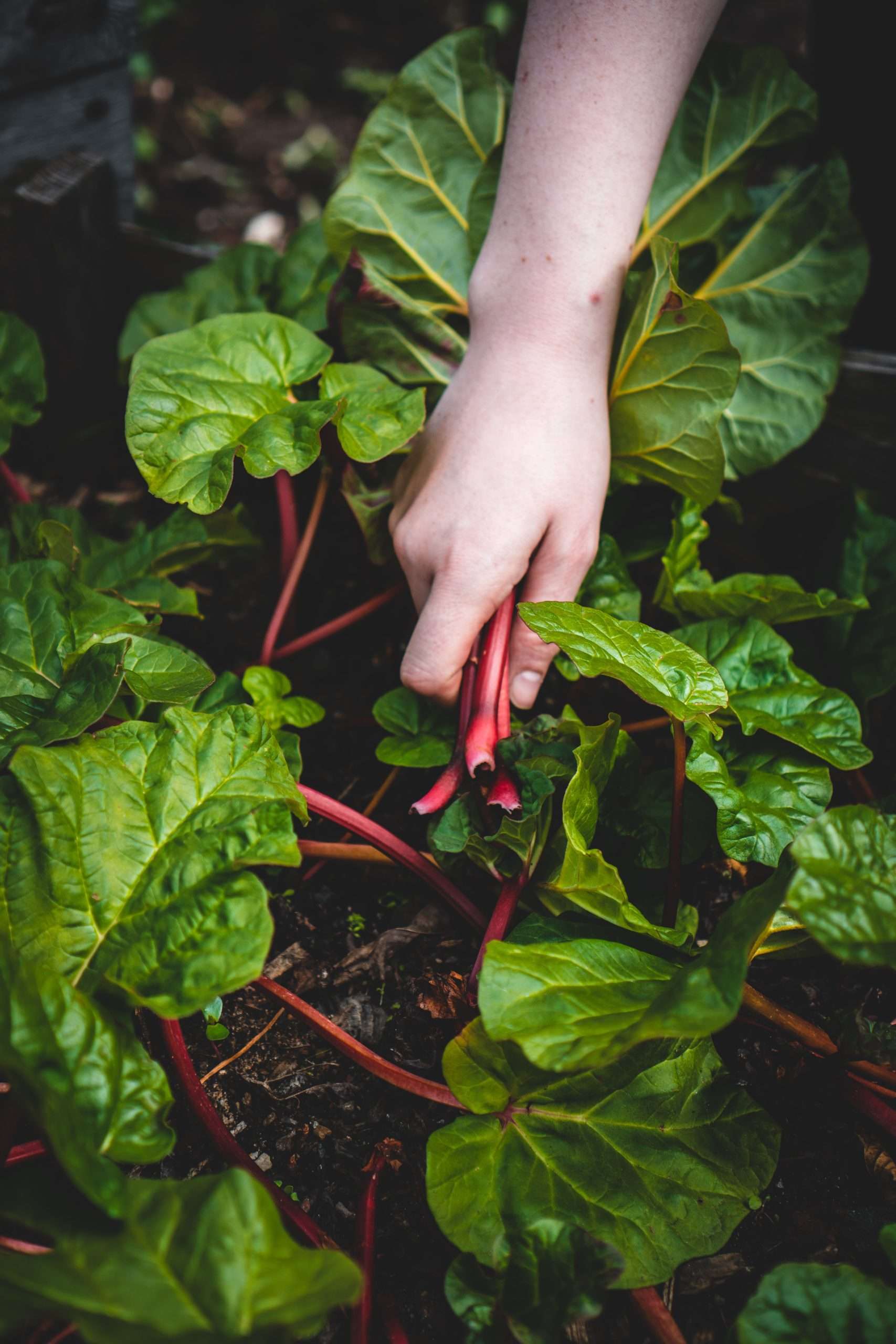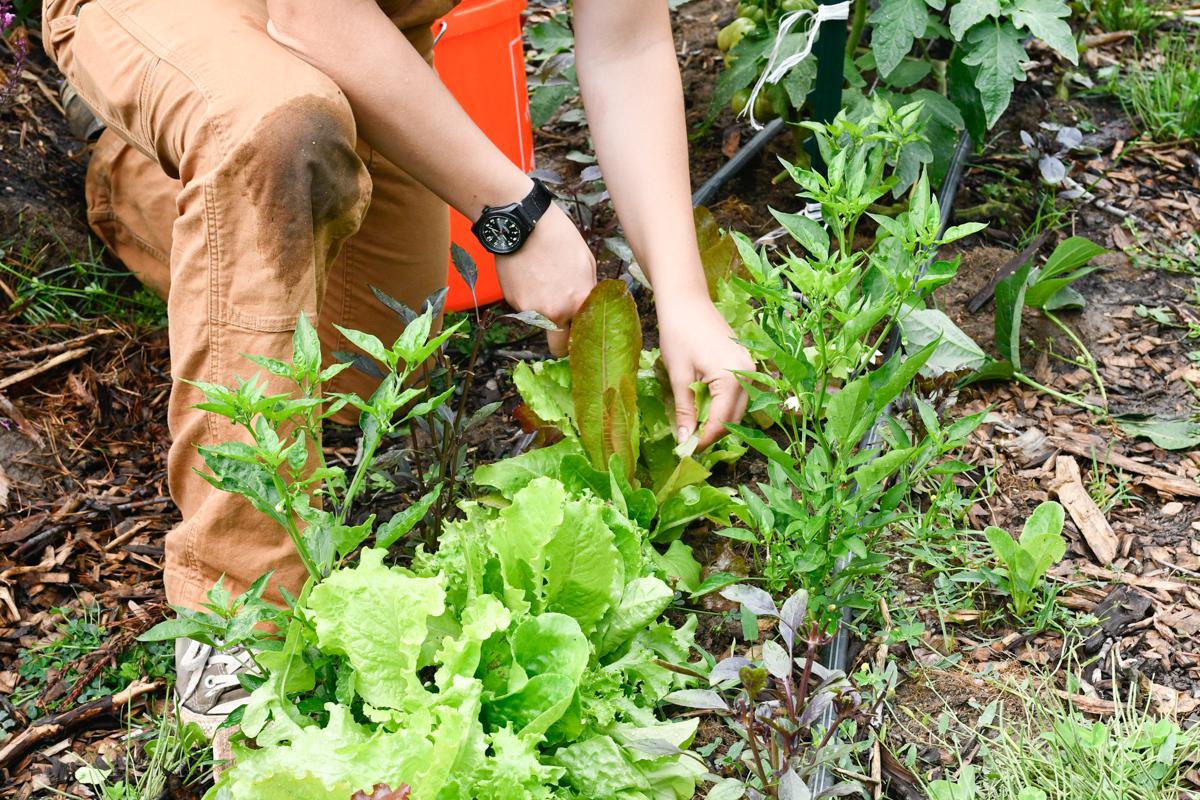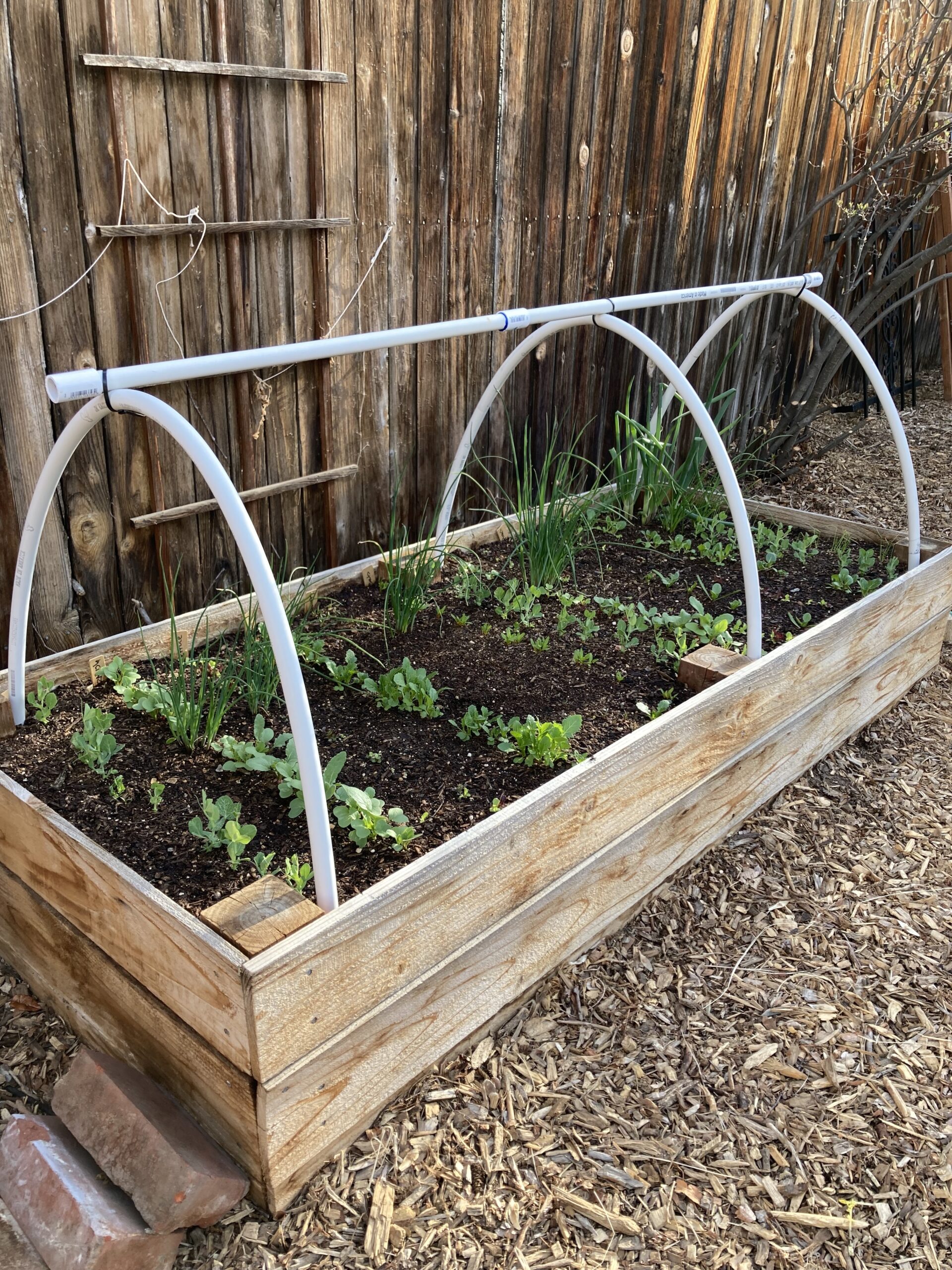Fall gardening is a great way to extend the growing season as the warm weather crops of summer are ending their life cycle.
What to Grow
All cool weather crops can be successfully grown in the fall. Optimal temperatures for these crops range from 55-75° F. Crops grown for a fall and/or early spring harvest include garlic, radishes, beets, broccoli, cabbage (including Chinese cabbage), cauliflower, chard, collards, kale, kohlrabi, parsnips, rutabagas, turnips, carrots, peas, leaf lettuces, mustard greens, parsley and spinach.
When to Plant
Tentative first frost date in Denver is the first week in October. Check the maturity date (days to harvest) on the back of the seed packets. Add the time needed for germination (usually 7-10 days) plus another 10 days to your time to account for slower growth with decreasing daylight hours.
Example: If peas mature in 62 days, add 10 days for germination and another 10 days for slower growth in late summer. For this vegetable, we would need to plant the seeds 82 days prior to the end of the first week in October, which would be around the last week in July to gain a fall harvest.
Soil Preparation
Before planting new transplants or seeds, cultivate seedbeds deeply and incorporate at least one inch of aged compost, dug into the top two inches of soil. Moisten soil lightly and if possible wait at least two days for buried weed seeds to emerge before planting fall crops. Use a hoe to cultivate out weeds, which can be left on the soil surface to decompose and provide extra nutrients.
Selecting Varieties
Always select the shortest maturing variety of a vegetable (e.g. a 62 day vs. a 70 day pea) for fall planting. Some examples are below.

| Peas
Shelling peas: Strike, Premium and Little Marvel Snap peas: Sugar Ann, Sugar Sprint Snow or sugar peas: Snow Sweet, Oregon Giant and Dwarf Grey Sugar Pea |
Radishes
Any variety of radish planted in spring that matures in less than 35 days, such as Cherry Belle or Easter Eggs can be selected for late summer or fall planting. Avoid daikon types that require a long growing season. |
| Carrots
Nantes or Chantennay/Kuroda types (shorter, blunter carrots that do better in Colorado heavy clay soil) include Nantes Half Long or Vitana, Bolero or Hercules |
Beets
Standard spring varieties of beets include Detroit Dark Red, Red Ace and Chioggia. |
| Spinach
Varieties that are good for fall harvest and also can overwinter if protected with straw or leaves include Avon, Indian Summer, Melody and Tyee. Leaves can be either smooth or crinkled. |
Lettuce Greenleaf: Black Seeded Simpson and Waldmann’s Dark Redleaf: New Red Fire and Vulcan Green Oakleaf: Sergeant Romaine or Cos: Winter Density, Green Forest Green Butterhead: Adriana and Nancy Bibb: Buttercrunch |
Planting Techniques
Plant slightly deeper than spring plantings to account for hot, dry soil. When making a furrow, moisten it well before scattering seeds. Mulch seeds beds immediately with straw to preserve moisture and keep the soil as cool as possible. Peas benefit from soaking them for a few hours in a solution of 3 tsp. liquid kelp to one quart of water. Beets, carrots, parsley, spinach and parsnips should be soaked overnight in the same concentrate. All cool season crops, when planted in summer heat, enjoy foliar sprays of 1 tsp. liquid kelp to 1 quart of water. Mix the solution in a spray bottle and mist on all foliage. This also provides a few degrees of frost protection at the end of the season. Shade cloth fabric stapled on a wooden frame is helpful for peas, lettuce and spinach.
Crop Specifics
Broccoli, cabbage, Chinese cabbage, cauliflower and Brussels sprouts do better starting inside, under lights and set out when they are six weeks old. Plan on having them garden ready by the end of July, hardening them off for one week in the shade before planting them in full sun conditions. All of these plants require abundant nitrogen, mulched soils for cool roots and even moisture for best results. As tiny heads appear on cauliflower, tie the large leaves together with string to prevent browning of the curds from the strong sunshine.
Plant spinach during the last week in August and again in the first week in September. By mid-October, as nights cool substantially, mulch the whole plant with three inches of straw or chopped leaves to provide an over-wintering blanket of protection.


Lettuces are best planted as succession crops, in compost-enriched, moist 1/2” deep furrows. Plant small quantities from the end of August through mid-September, at two-week intervals. Again, mulch seedbeds as soon as seeds are planted. Young plants can be treated in a similar manner to spinach, using mowed leaves or straw for over-wintering.
Cilantro will yield a superior crop when planted early to mid-September as daylight hours shorten and temperatures cool. Spring planted cilantro often sends up a flowering stalk prematurely as temperatures warm rapidly. Allowing a single plant to set and drop seed is an easy way to plant a fall crop. Mulch the young plants as October approaches and plants will grow rapidly the following spring.
Frost Protection
Row covers of spun polyester (a Reemay-type of fabric) can be directly placed over crops when night temperatures lower into the 30s and will provide several degrees of frost protection.
Rocks can be used to prevent the fabric from blowing away, laying them directly on the soil/fabric interface. Additionally a foliar spray on all crops of liquid kelp (1 tsp. kelp/qt. of water) will provide additional frost protection and also increase the storage life of vegetables.
Hoop houses are a great way to extend the season by creating a mini-greenhouse in your garden. Here is a video on how to build one.
Harvest Essentials
Harvest individual, outer leaves of spinach and lettuces to promote extended growth periods before heavy frost. Carrots must be thinned to 2-3” apart as they grow, to allow the roots sufficient room to expand. They may be harvested as baby carrots, as soon as the deep orange color is seen.
As they grow, mound soil over the tops (crowns) of the carrots to prevent the sun from greening the shoulders of the vegetable and producing a bitter taste in the roots. Radishes are best utilized when they are about the size of a penny and will reach edible size within a month of germinating. Vegetables are most nutritious when grown in compost-enriched soil that is cultivated on a regular basis.




